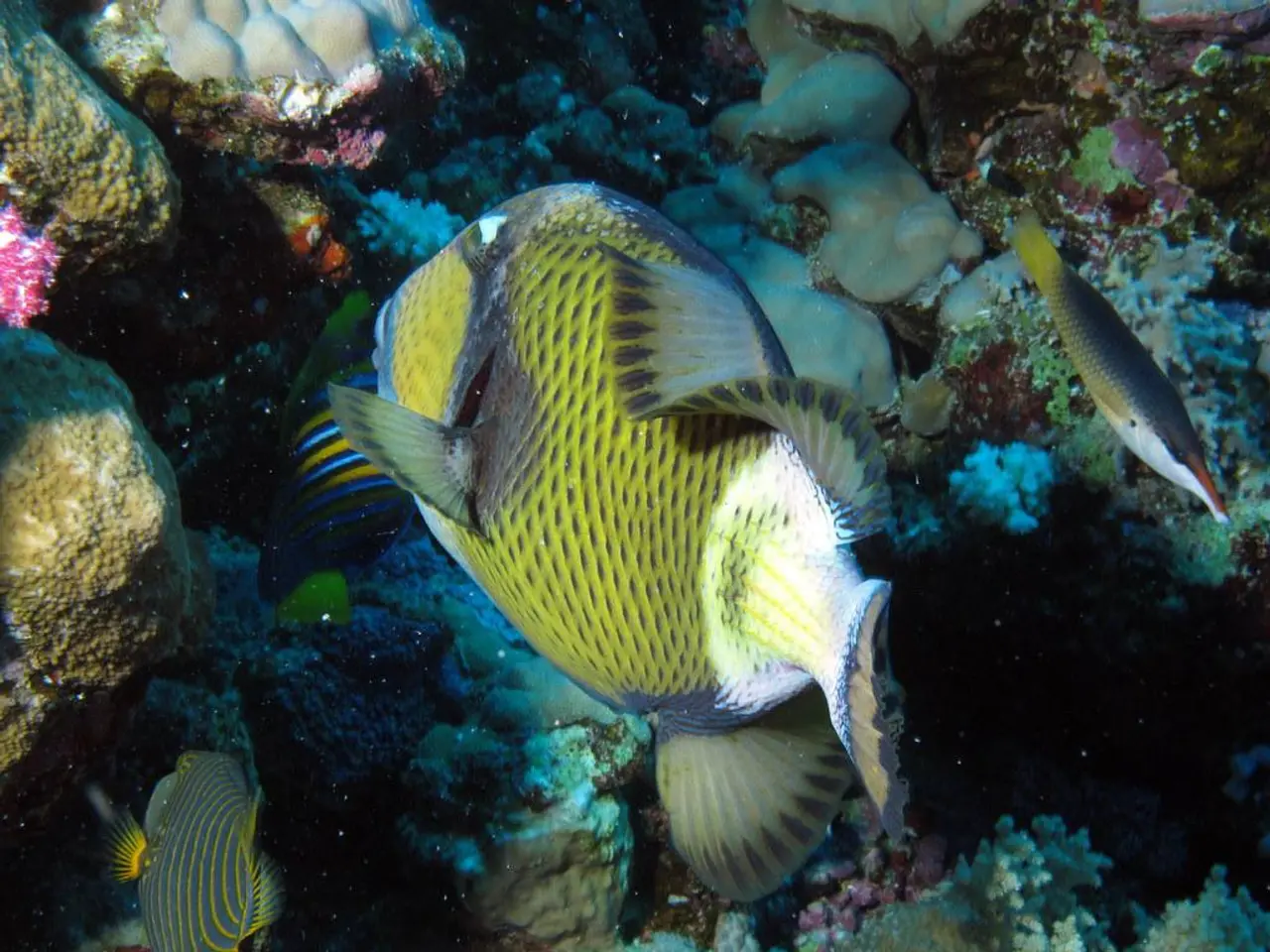Terrarium-friendly Mosses: Lush Varieties with Expert Recommendations
In the world of terrarium gardening, moss is a versatile and essential element. From creating a lush, green ground cover to providing moisture control, there's a moss type to suit every terrarium. Here's a guide to some of the top recommended mosses and their growth patterns and environmental suitability.
For those seeking dense, carpet-like ground cover, Hypnum Imponens (Brocade Moss) is a popular choice. Known for its beautiful, dense, carpet-like growth, it forms a lush, green cover, ideal for creating a natural forest floor appearance in terrariums. It prefers moderate light and humidity and grows relatively quickly, forming a dense mat.
Sphagnum Moss, on the other hand, is widely used for moisture retention and creating humidity. Its growth is looser and more cushion-like compared to sheet moss, making it excellent for moisture control and as a substrate component.
Aquatic mosses like Java Moss, Christmas Moss, and Flame Moss are ideal for very humid or semi-aquatic terrariums. Java Moss and Christmas Moss provide a soft, dense cover, while Flame Moss has a unique upright growth pattern, adding texture and vertical interest. They are suitable for moisture-rich terrariums and can tolerate lower light.
Peacock Moss, with its slow growth and tidy, pine tree-like appearance, thrives in cooler temperatures below 75°F and does not require strong light. Its slow growth helps avoid overgrowth problems typical in some moss species.
Choosing the right moss depends on the terrarium’s light, temperature, humidity conditions, and desired aesthetic and maintenance level. For example, tropical mosses are typically suited for tropical closed terrariums, but several favorite terrarium mosses are temperate species. Mood Moss (Dicranum scoparium) is another popular clumpy moss, growing in dense clumps with lush, wavy leaves.
Moss is often characterized by two growth patterns: Acrocarpous and Pleurocarpous. Acrocarpous mosses, like Hypnum Imponens, grow in clumps and add shape and texture, creating a dynamic landscape. Pleurocarpous mosses, like Fern Moss (Thuidium delicatulum), grow in sheets and are best for covering an area with a natural moss carpet.
A variety of tried-and-tested moss species are available for terrarium planting. Sheet Moss (Hypnum) is a popular carpeting moss, growing wide and covering areas like a sheet. Cushion Moss/Bun Moss (Leucobryum glaucum) is a popular clumpy moss for terrariums, known for its compact and sculptable nature.
Environmental suitability is the most flexible category when choosing moss for a terrarium. Sphagnum Moss is a versatile moss commonly used as a medium to grow other mosses and terrarium plants. During the acclimatization period of a new terrarium project, it's important to keep moss hydrated to ensure a healthy start.
In conclusion, with a wide variety of moss types available, each with its unique growth pattern and environmental suitability, there's a moss for every terrarium enthusiast. Whether you're looking for a dense, carpet-like ground cover, humidity control, or a unique texture, the ever-adaptable moss is the perfect addition to your terrarium.
For home-and-garden enthusiasts interested in home terrariums, Hypnum Imponens (Brocade Moss) is a popular choice for creating a dense, carpet-like ground cover that forms a lush, green cover, ideal for mimicking a natural forest floor appearance. Sphagnum Moss, with its cushion-like growth, is widely used for moisture retention and creating humidity in terrariums.




